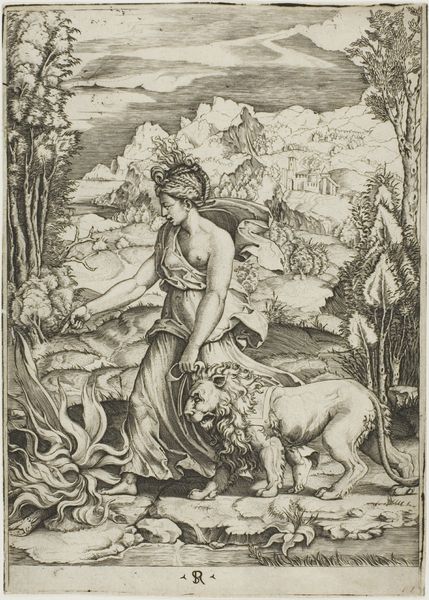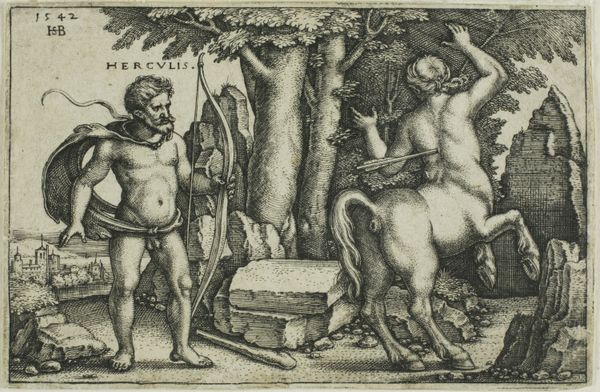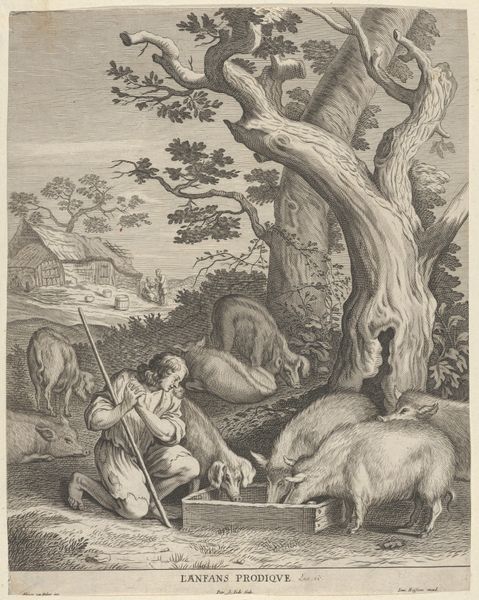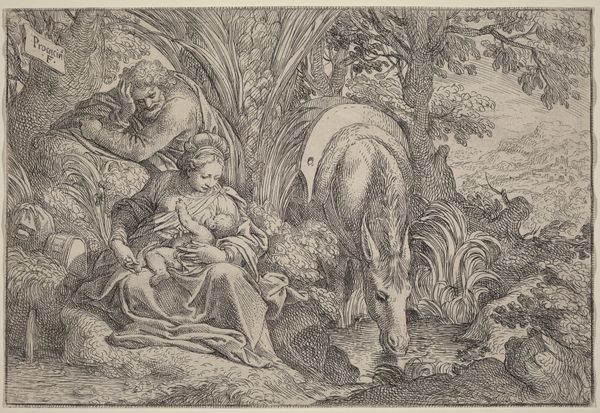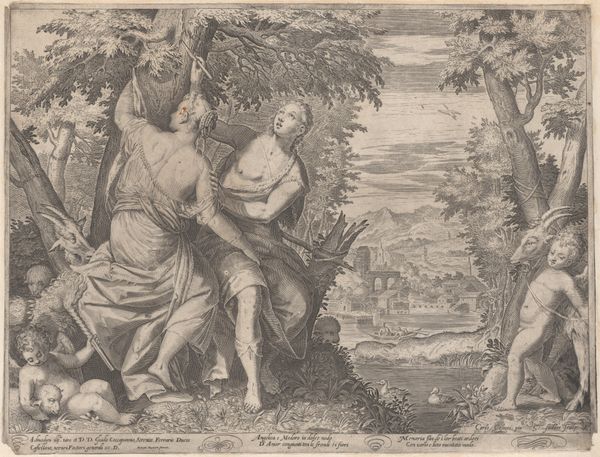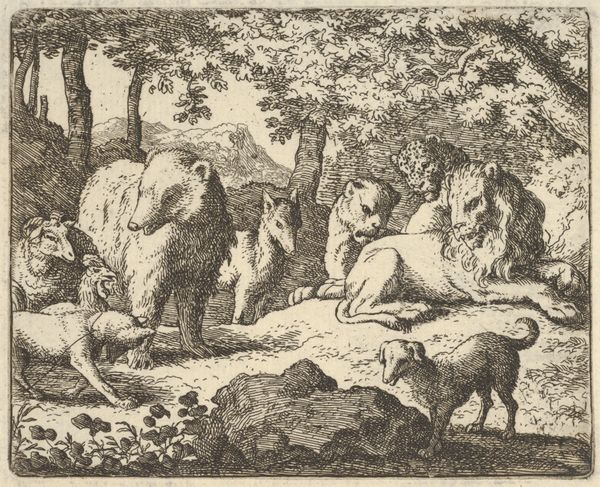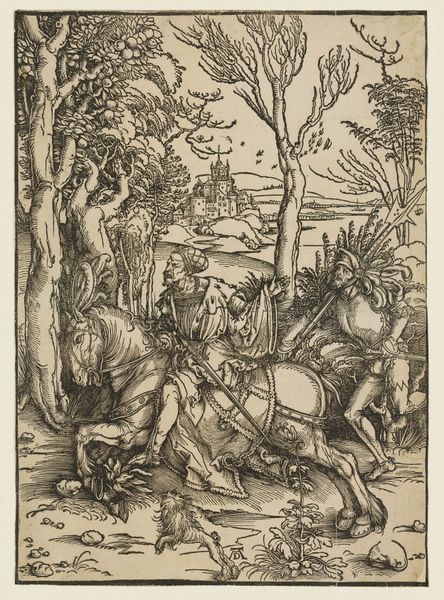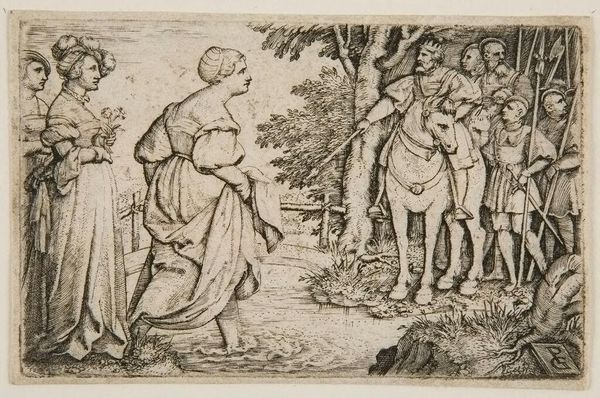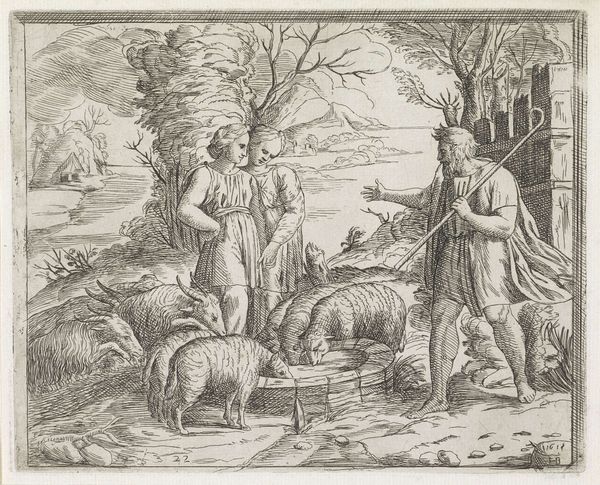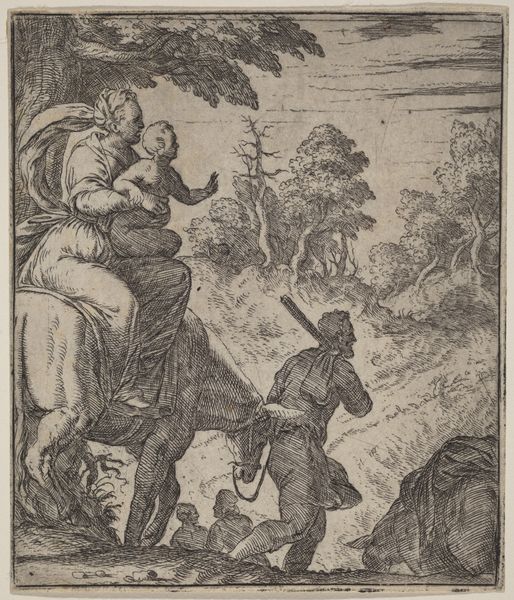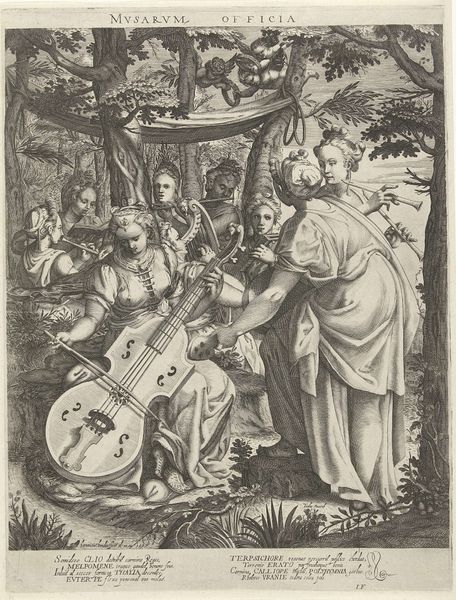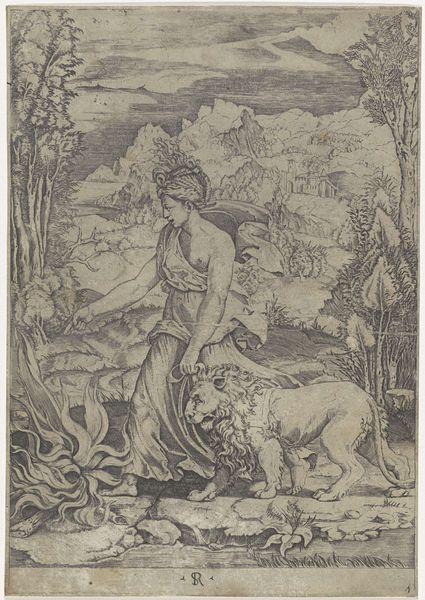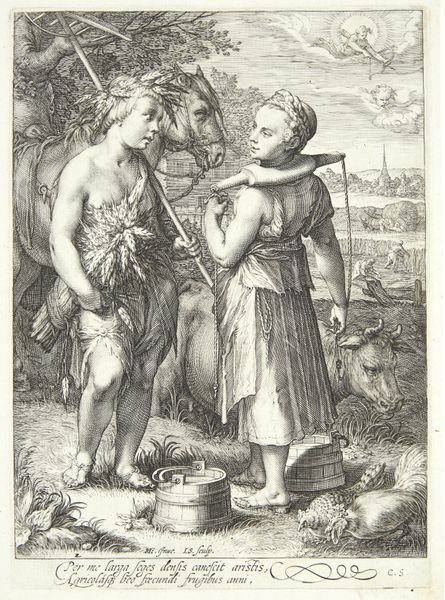
Dimensions: 50 × 78 mm (sheet)
Copyright: Public Domain
Editor: So, this is "The Queen of Sheba Avoiding the Wooden Bridge," an engraving on paper made around 1532 by Georg Pencz. It's interesting how he chose to depict this specific moment; she seems so vulnerable wading through the water, almost defying her royal status. What do you make of Pencz's approach to this subject? Curator: It's fascinating to consider this print within its historical context. The Queen of Sheba was often used as a symbol, particularly within religious narratives. Pencz, as part of the German Renaissance, was working in a society deeply influenced by religious reform and new interpretations of biblical stories. Is this depiction of vulnerability intended to humanize her, perhaps even critique the rigid social structures of the time, by showing her, a queen, literally getting her feet wet? Editor: That’s an intriguing angle! I hadn’t thought about it in terms of social commentary. So, the print medium itself... does that influence its reception? Curator: Absolutely. The affordability and accessibility of prints allowed for a wider dissemination of ideas. This image, seen by a broader audience than a painting hanging in a palace, could have subtly shaped public perceptions of power, gender, and even religious authority. Did this new media of print challenge elitist notions around Art? Editor: It sounds like this image packs quite a political punch for something that looks relatively straightforward! The way you connect it to the social context gives the print a whole new layer of meaning. Curator: Precisely. By examining how images like this circulated and were consumed, we gain insights into the complex dynamics of power and belief in the 16th century. And do these historical observations change your interpretation of the piece now? Editor: Definitely! It highlights how even seemingly simple depictions can carry complex social and political messages. It really challenges how I approach and consider any art, actually. Thanks!
Comments
No comments
Be the first to comment and join the conversation on the ultimate creative platform.
